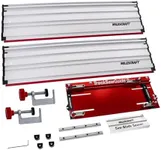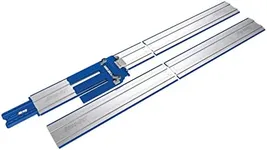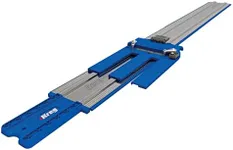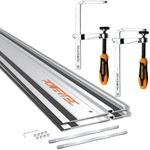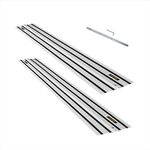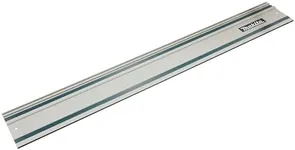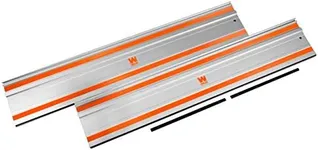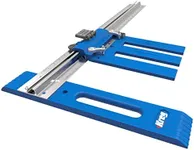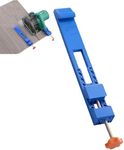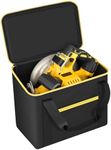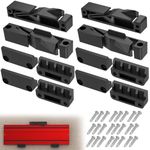Buying Guide for the Best Circular Saw Guides
Choosing the right circular saw guide can significantly improve the accuracy and quality of your cuts, making your woodworking projects easier and more professional. When selecting a circular saw guide, it's important to consider several key specifications to ensure you get the best fit for your needs. Understanding these specs will help you make an informed decision and get the most out of your tool.LengthThe length of a circular saw guide determines the maximum length of the cut you can make. This is important because it affects the size of the material you can work with. Guides typically come in lengths ranging from 24 inches to 100 inches or more. For smaller projects or cuts, a shorter guide (24-50 inches) may be sufficient. For larger projects, such as cutting full sheets of plywood, a longer guide (50-100 inches) is more appropriate. Choose a length that matches the size of the materials you commonly work with.
MaterialCircular saw guides are made from various materials, including aluminum, steel, and plastic. The material affects the guide's durability, weight, and stability. Aluminum guides are lightweight and resistant to rust, making them easy to handle and long-lasting. Steel guides are heavier and more durable, providing excellent stability but can be cumbersome to move. Plastic guides are lightweight and affordable but may not be as durable. Consider the balance between durability and ease of use based on your typical projects.
CompatibilityCompatibility refers to whether the guide can be used with your specific circular saw model. Some guides are universal and can fit most saws, while others are designed for specific brands or models. It's important to check the compatibility to ensure a secure fit and accurate cuts. If you already own a circular saw, look for guides that are compatible with your model. If you're purchasing both a saw and a guide, consider buying from the same brand to ensure compatibility.
Ease of UseEase of use encompasses features that make the guide simple to set up and operate. This includes things like quick-release clamps, easy-to-read measurement markings, and intuitive adjustment mechanisms. A guide that is easy to use will save you time and reduce frustration, especially if you frequently adjust your setup. Look for guides with features that streamline the process and make your work more efficient.
AccuracyAccuracy is crucial for achieving precise cuts. This depends on the guide's design, including how well it stays in place during cutting and the precision of its measurement markings. High-quality guides often have anti-slip features and precise calibration to ensure straight, accurate cuts. If your projects require high precision, invest in a guide known for its accuracy. For general use, a standard guide with good reviews for accuracy should suffice.
PortabilityPortability refers to how easy it is to transport and store the guide. This is influenced by the guide's weight, length, and whether it can be disassembled or folded. If you need to move your guide between job sites or have limited storage space, look for a lightweight, compact model. Some guides come with carrying cases or can be broken down into smaller sections for easier transport. Consider your mobility needs when choosing a guide.
